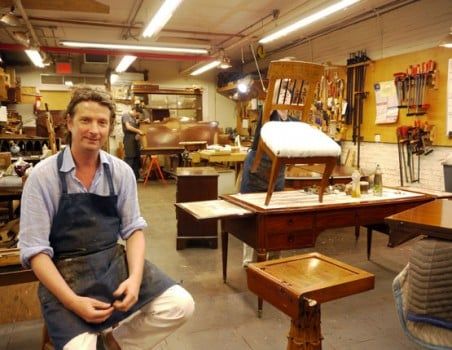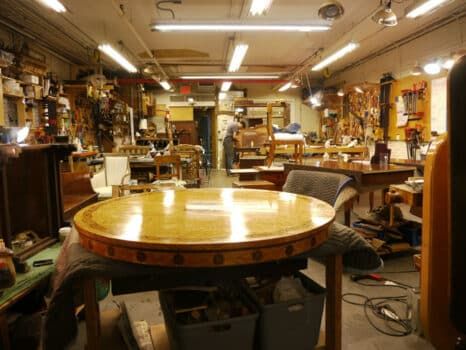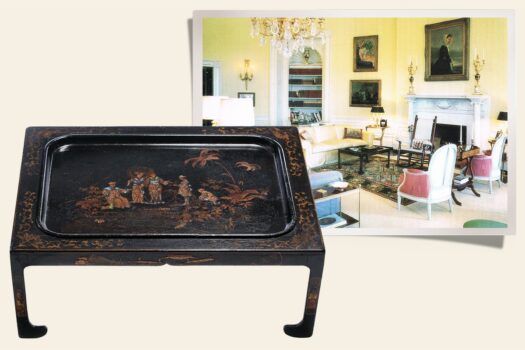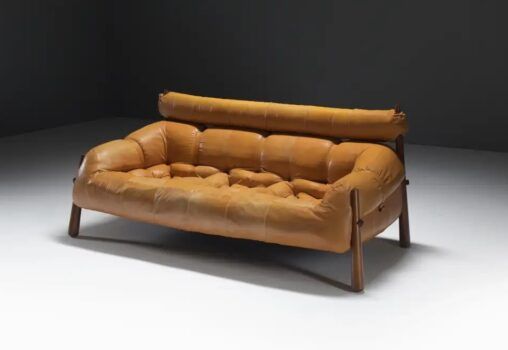In addition to having an amazing inventory of antique and vintage pieces, 1stdibs dealer Jonathan Burden also happens to be one of New York City’s most highly-regarded experts on furniture restoration. We spoke to Jonathan to learn about how he got his start in the business, as well as get his take on how to best care for our one-of-a-kind items. Read on below to see his answers.

Inside Jonathan Burden’s beautiful Tribeca gallery-cum-workspace.
The Study: How did you get your start in furniture restoration?
Jonathan Burden: As a teenager, I began with an apprenticeship preserving and restoring furniture, which allowed me to enroll at West Dean College in Sussex. This sparked my interest in dealing and handling other things besides just furniture, including clocks, musical instruments, porcelain and tapestries. It was a very influential environment and there was a strong association with the Surrealist designers—including Dali, who developed the Mae West Lip Sofa and Lobster Telephone while there.
TS: What was it like navigating your way from being a student to starting your own business?
JB: After school I went to work for Ronald Phillips, during which time I met a ton of people in the trade. It was the 1980s so people were buying and selling out of the back of dusty workshops. I moved to Switzerland to learn more about continental and European furniture, then moved to New York and worked for a short time at Sotheby’s. I started my own business in a warehouse in Williamsburg — before Williamsburg was cool — and just began restoring and manufacturing furniture out of salvaged wood, putting things together in funny ways. It was a very exciting time.

Jonathan photographed inside his workspace.
TS: Can you speak to some of your recent restoration work?
JB: My work can range from restoring a room in a museum to glueing a leg back on someone’s kitchen chair. I recently restored some antique Chinese chairs that ended up selling for $500,000 at auction; I work with a lot of auction houses as well as private clients. But within this wide scope of work are some commonalities. A lot of restoration is related to climate issues, and a lot of issues come from people simply misusing items in an everyday sense. So it’s a lot of waxing and fixing dry, cracked pieces.
TS: What has been the most satisfying project you’ve worked on?
JB: There’s been so many! I generally find it very satisfying to work on something I’ve never worked on before, and that requires a good amount of research for proper restoration. I recently worked on a 20th century desk that required restoring and replacing leatherwork, which I didn’t really know much about. With the help of some friends and research the desk — it was by Hermes with a steel frame — came out beautifully. The
process was long and difficult but the result was rewarding—at the end of the process, it just looks fantastic.

Another view of the Jonathan Burden workspace.
TS: Can you share some tips for preserving furniture?
JB: There are a number of preventative steps that you can take to help best preserve your furniture. like keeping things away from drafty
windows, radiators and direct sunlight. This will prevent wood from changing color and drying out — which can happen in just a few months, and can cause extensive cracking and bowing. Waxing is also important as it nourishes wood. Furniture is like fine art—it should be handled with care and protected from the elements. You wouldn’t put a de Kooning in the window!
All photos courtesy of the dealer. Visit their website to learn more about Jonathan Burden.




